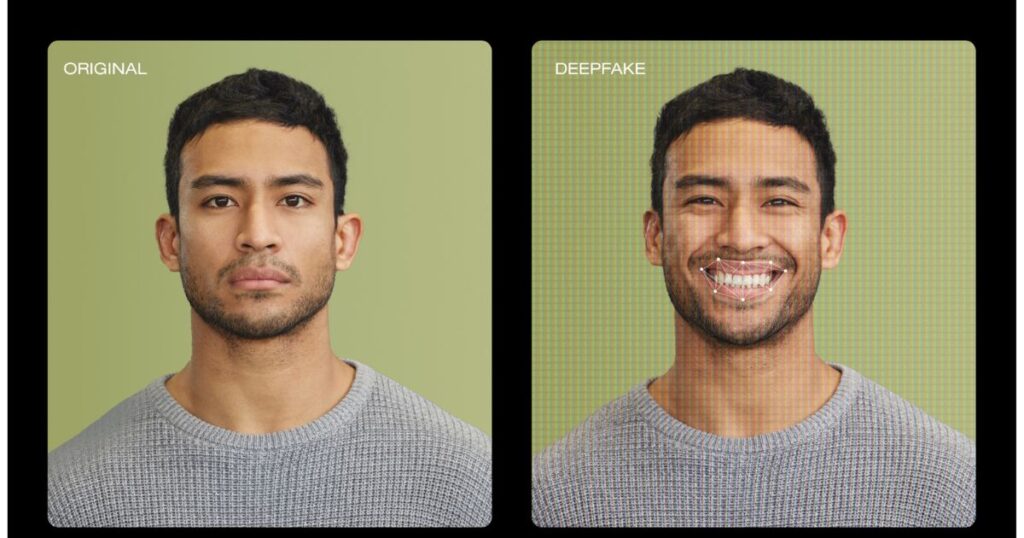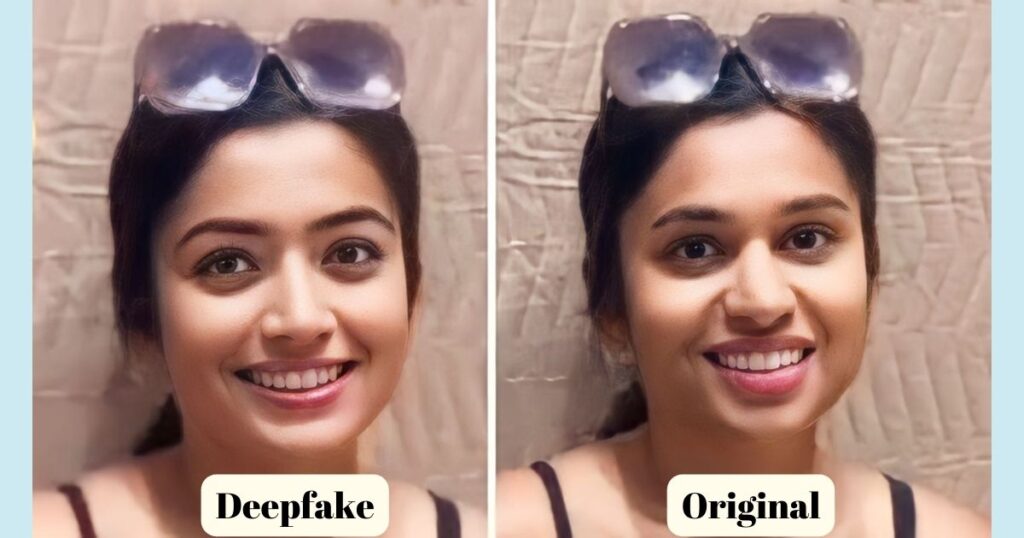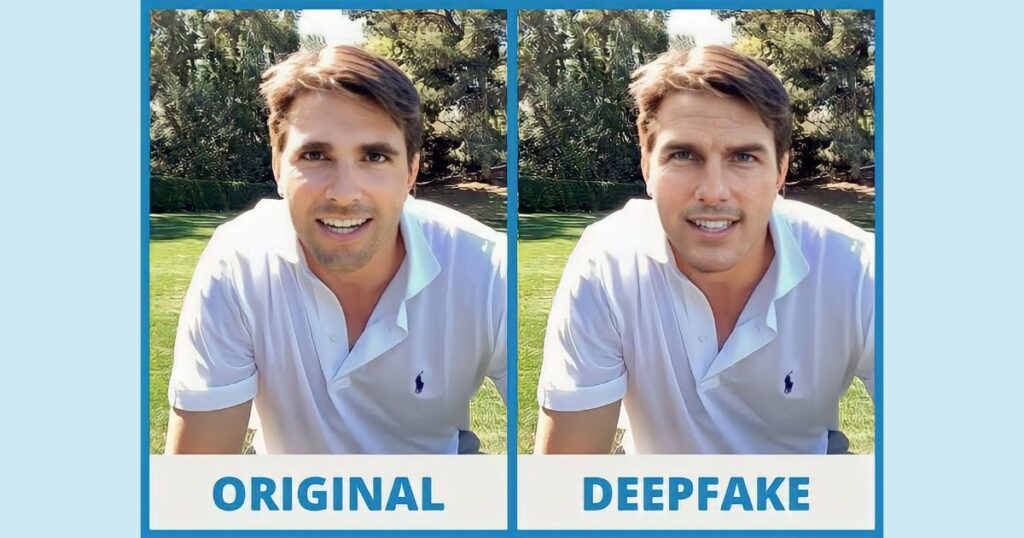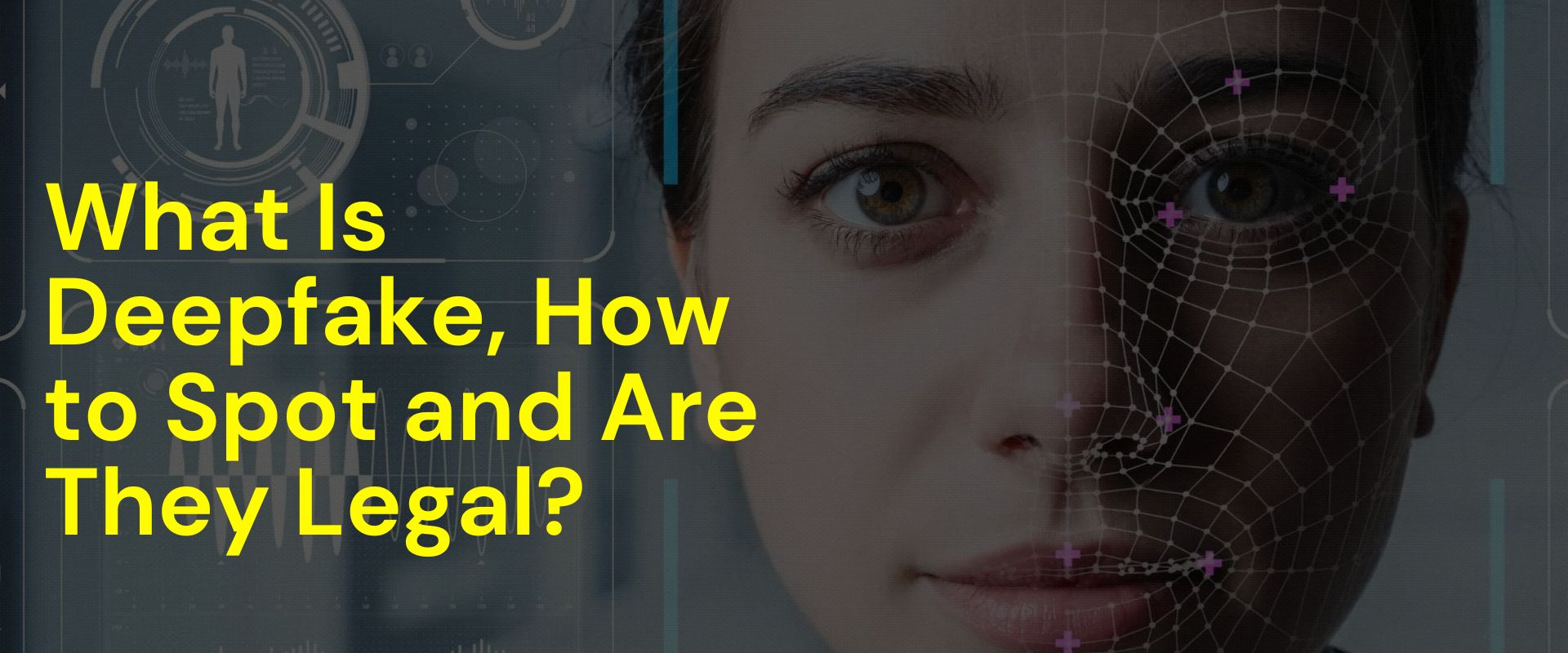Although Deepfake videos are not new, technology is making them more complex. Recently, Rashmika Mandana Deepfake has been named the new victim. Deepfakes make it look like a person has done something they haven’t by replacing their voice or appearance. In Generative Adversarial Networks, these types of videos are made using Encoders and Decoders.
This post will clarify what is Deepfake, how it’s been created, how to spot them, and whether they are legal or not.
Table of Contents
What Is Deepfake?

In a nutshell, what is Deepfake technology? AI techniques modify media, usually videos, to create Deepfakes. Using these techniques, one person’s voice or appearance is replaced by another, and it seems that the character in the clip is acting or saying in ways they would never have.
How Do Deepfakes Work?
Fake videos, known as Deepfakes, are made using Encoder and decoder networks, usually as part of a GAN (Generative Adversarial Network). The Encoder looks at the actual face and figures out important features and details. The Decoder uses these features to create something new, such as manipulated faces. The AI tool keeps doing this repeatedly until it gets the desired result. When making video Deepfakes, this step for every frame of that clip ensures everything looks consistent. GANs use a generator to make fake stuff and a discriminator to tell if it’s real or not.
a. Deepfake Examples
Look at these Deepfake examples (photos):



b. Deepfake Video Example
Look at this Deepfake video example:
What Are Deepfakes Used For?
To protect privacy, Deepfake masked people’s faces and voices. People can use Deepfake AI to make avatars that express themselves online. Someone can become more independent and broaden their goals, thoughts, and beliefs through a personal AI avatar.
People with disabilities can use virtual characters to better communicate on the internet. Deepfakes let people express themselves and fit into the online world in new ways.
How Do You Spot a Deepfake?
Now, the question is how to spot a Deepfake video. Spotting Deepfake videos is becoming difficult because the tools making them are getting better. In 2018, an analyst in the US showed that Deepfake faces don’t blink naturally, making it a useful clue to determine if videos and images were fake. Once the study came out, Deepfake makers quickly made adjustments, making it harder to spot Deepfake videos.
However, not every Deepfake video is made with sophisticated technology. To spot a Deepfake:
- Hair that looks fake. You won’t notice flyaway or frizzy hair because fake photos cannot generate these particular features.
- Teeth that appear artificial. Algorithms might struggle to create single teeth, so if you don’t see detailed outlines of particular teeth, that might be a hint.
- Spot weird lighting or background.
- Find lighting or shadows that don’t match the person’s face.
- Think about whether the content is really eye-catching, controversial, or surprising.
- Use Deepfake Detect software.
Usually, algorithms nowadays are good at creating realistic images of faces when viewed from the front, but they struggle more with side views, as mentioned in ZDNet, a tech magazine. As Deepfake AI gets trickier, there are now tools to help someone spot fake content on online forums and social media.
MIT made Detect Fakes software to spot Deepfakes by paying attention to small details. Double-checking info from trustworthy sources is key to truly grasping it and confirming its authenticity.
How Are Deepfakes Dangerous?
Usually, Deepfakes are made to deliberately share inaccurate information or with a not-so-nice purpose in mind. The aim is to demean, intimidate, undermine, and harass people. Moreover, Deepfake technology fuels other unethical acts, where women get hurt disproportionately.
Celebrities Who Fell Victim to Deepfake
- Rashmika Mandanna got hit by a Deepfake—someone spread a fake video of her online, which went viral.
- Tom Hanks warned his Instagram followers about a troubling Deepfake incident on 1st October. He found out that a dental plan ad had a misleading fake version of him in it.
- Popular YouTuber Mr Beast got tricked by fake ads made by AI. Someone used a fake video on TikTok, pretending to be Donaldson and lying about giving away $2 iPhones in an ad.
Are Deepfakes Legal?
Protecting Deepfakes under the First Amendment can also be backed by copyright law. Using someone else’s face to make Deepfakes without permission could break copyright rules. Using this without permission is copyright infringement, but there are cases where limited use is allowed under the fair use conviction for certain works.
Is Deepfake Banned in India?
According to the updated rules in the IT Act of 2000, crimes can now be legally addressed under the IT (Intermediary Guidelines and Digital Media Ethics Code) Amendment Rules, 2022. Basically, they could use Sections 153-A17 and 153-B18 (about speech affecting public peace) and Section 49919 (about defamation) of the Penal Code from 1860 in this situation.
How to Defend Against Deepfakes?
Don’t spread Deepfakes if you come across them. Once you share a Deepfake to show friends, be aware it can spread on its own. If you’re in a Deepfake situation, reach out immediately to a lawyer who knows about media laws. If someone takes a video or image of you without your permission, even if it seems harmless, it’s still against the law.
Conclusion
To conclude, we have thoroughly discussed what is Deepfake AI, the victims of Deepfake, how to spot a Deepfake video, and how you can take action against Deepfake content. You, too, will have to stand up to this type of technology as the awakened citizenry of this country. You should be aware that this is something that can happen to you and also to your friends and relatives. We need to work together and take action to enjoy technology’s benefits while ensuring truth and authenticity stay strong in our digital world.
FAQs on What is Deepfake?
Is Deepfake used only to create videos?
Deepfake AI, or Deepfakes, are AI techniques that are not only used to create videos but also generate convincing audio and image hoaxes.
What is an example of a Deepfake?
Not long ago, Rashmika Mandanna got hit by a Deepfake—someone spread a fake video of her online, which went viral.
Is Deepfake a cyber crime?
Deepfake is when someone uses various tech tools to replicate someone’s identity and spread false data, like a cyber impersonation.
Is Deepfake Free?
Yes, go ahead and use the Deepfake videos you make on the platforms for your content. That’s what they’re there for—to make it easy for you to create videos with AI with no hassle.
Is Deepfakes Safe?
Deepfakes are made to intentionally share false data or with a not-so-friendly purpose. It is suggested that you should have a codeword that you can use with your loved ones in order to stay safe.
Can we detect Deepfakes?
Using tools can detect Deepfakes online. Be cautious and stay alert to protect yourself from Deepfakes, and make sure to pay attention to the content you see online and double-check information from different places.
How are Deepfakes misused?
Fake videos, known as Deepfakes, have been linked to spreading false information, making harmful fake content, and even used for revenge, blackmail, and stealing bank accounts. Fake content is getting advanced, making it hard to spot without detection tools.
Is watching Deepfake a crime?
Watching Deepfakes isn’t against the law universally, but it becomes illegal if the content breaks any rules, like if it’s inappropriate and made without the person’s permission.
Are Deepfake sites legal?
Depending on the jurisdiction, Deepfake sites are legal or illegal. They can be legal in some places if used responsibly, whereas in others, misuse could lead to legal repercussions.
Is downloading Deepfakes illegal?
In some cases, downloading Deepfakes may be illegal as they may involve the creation or distribution of explicit content, the defamation of others or the infringement of their copyrights.
